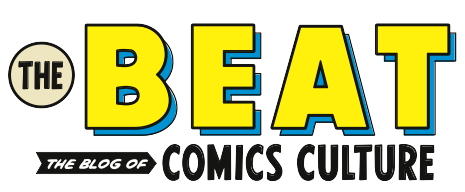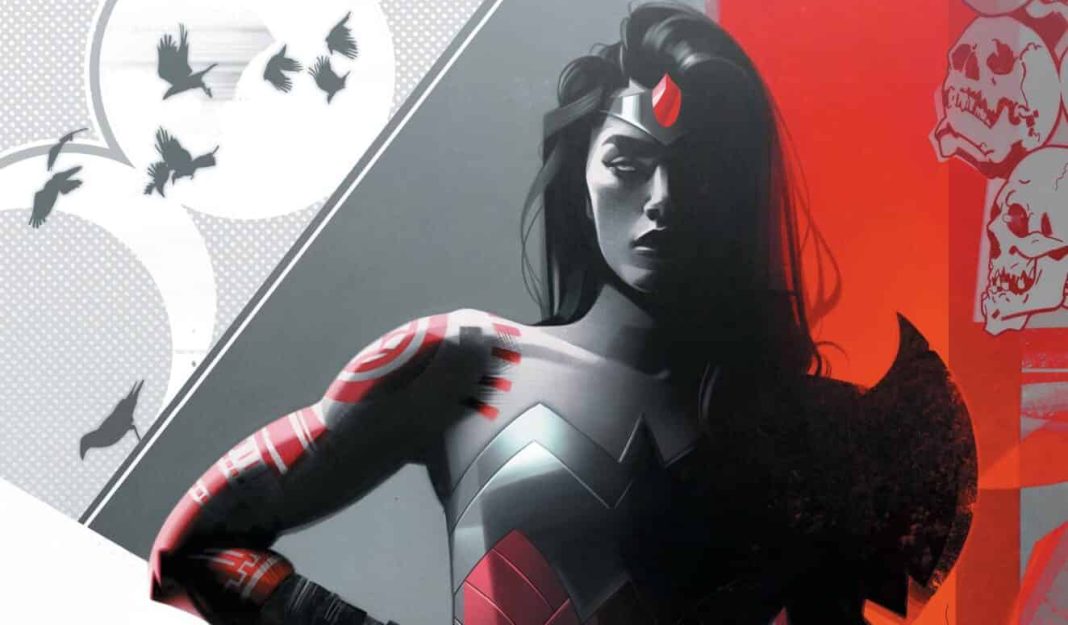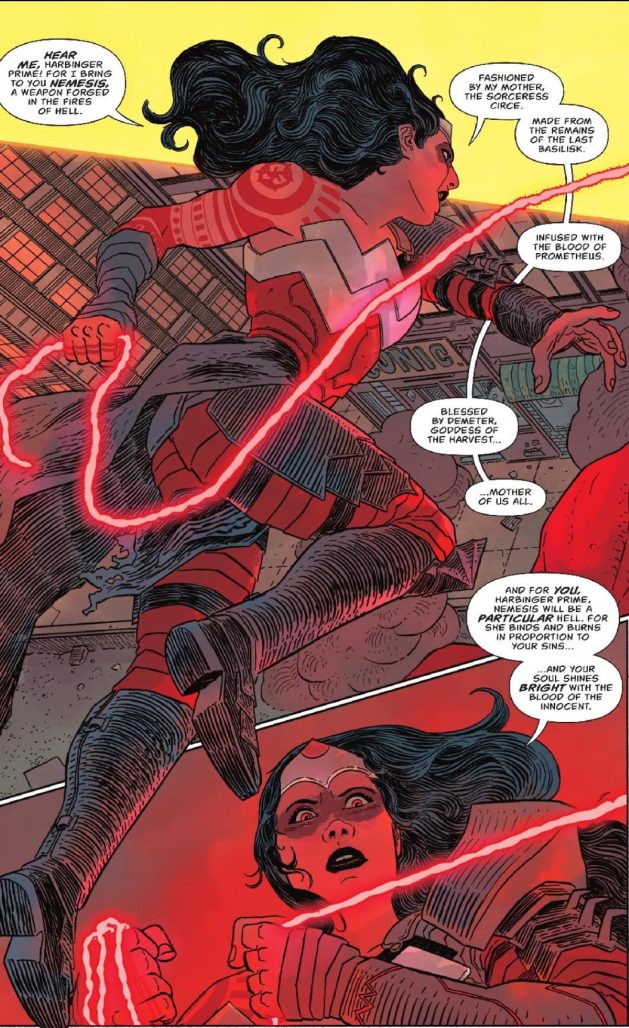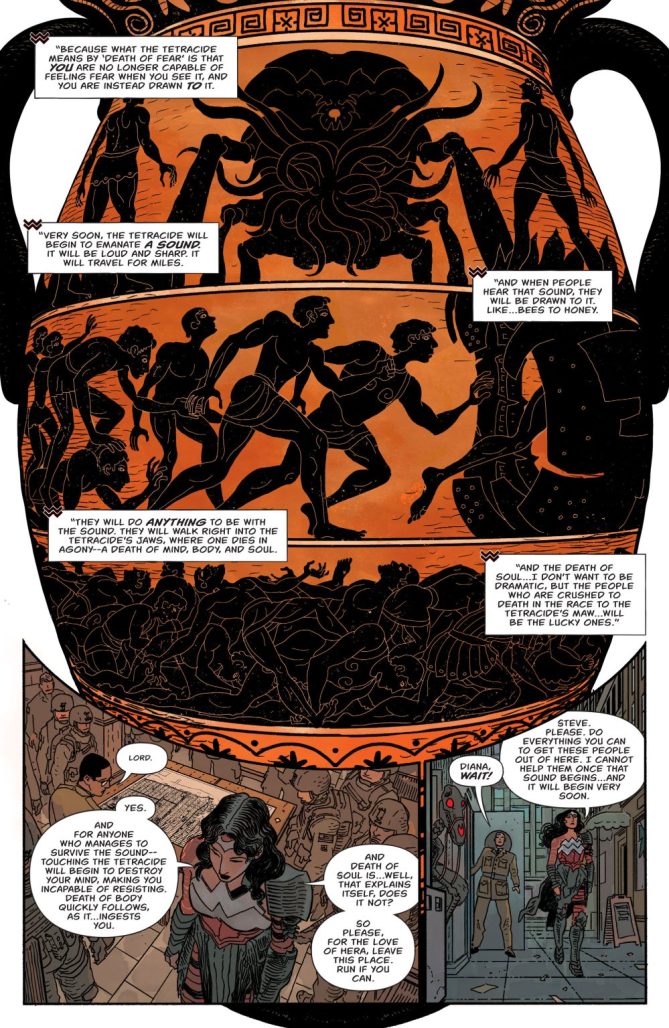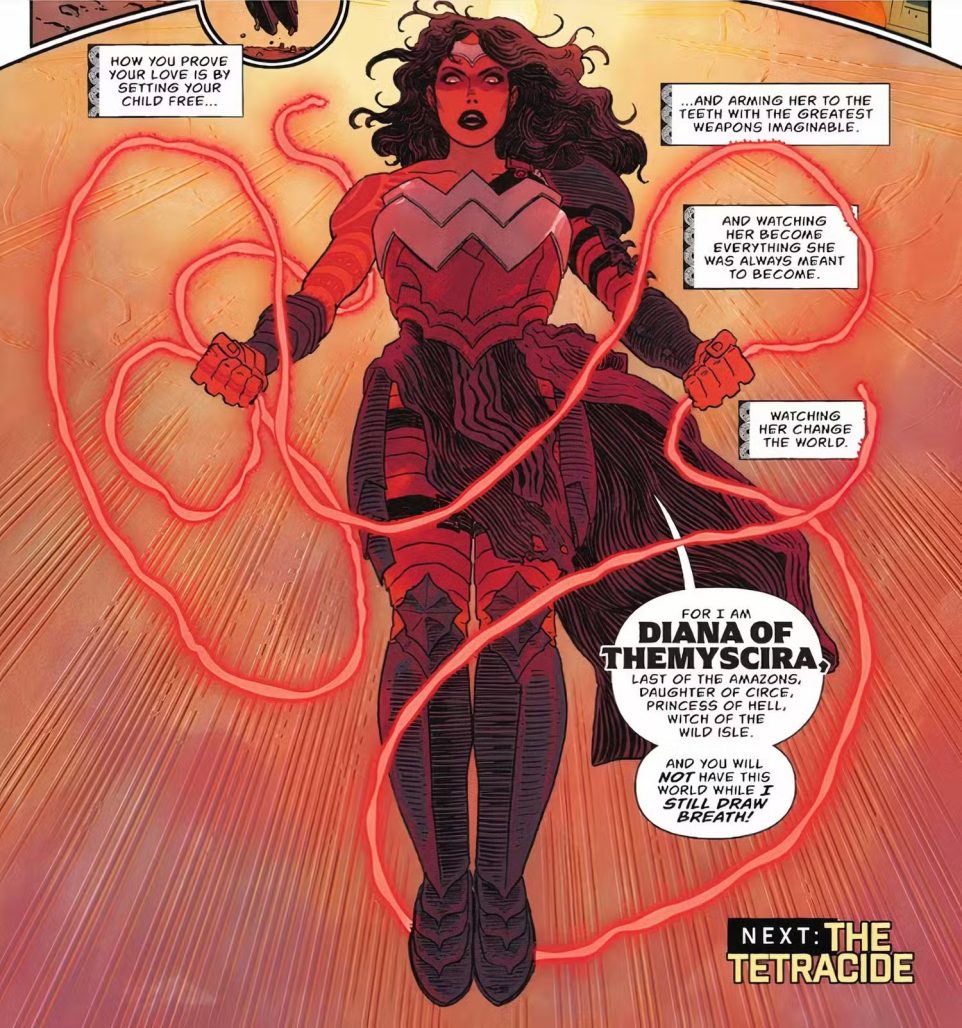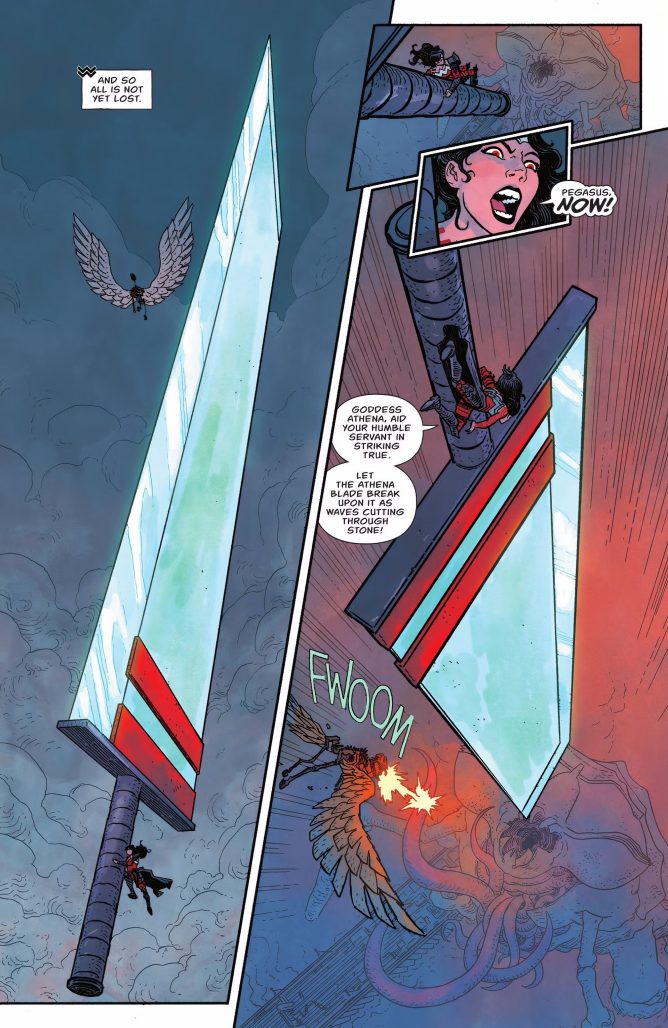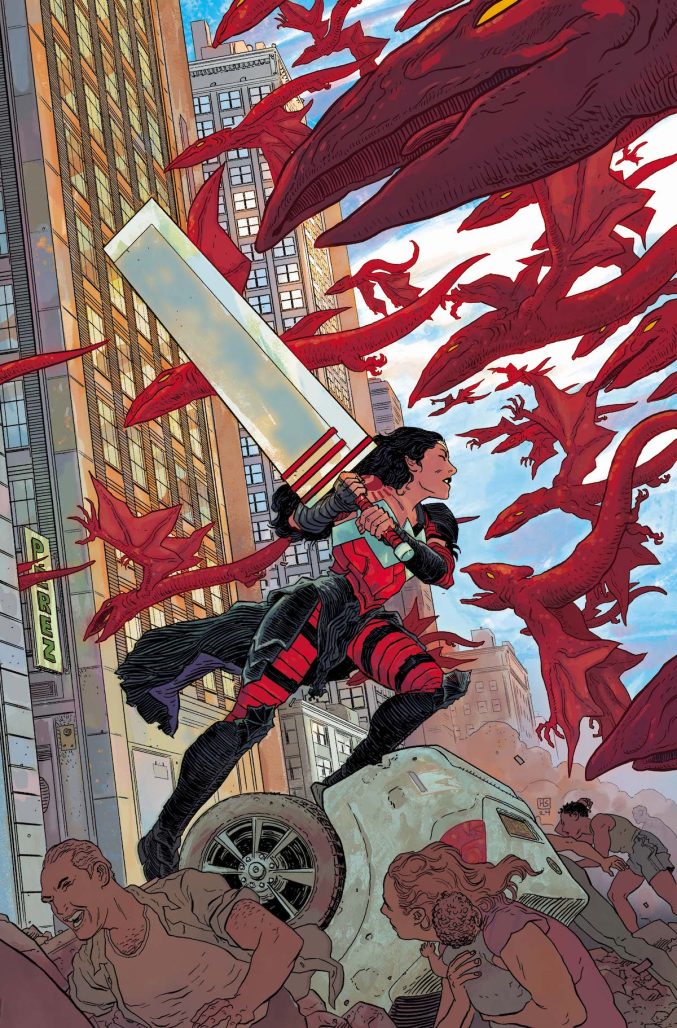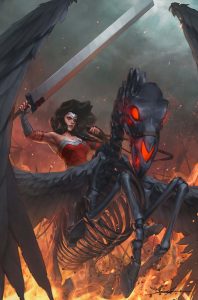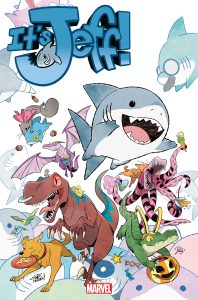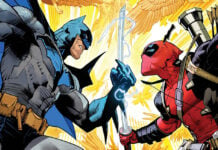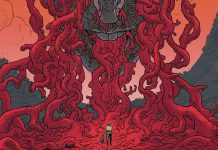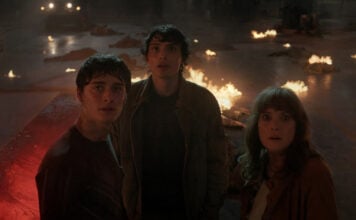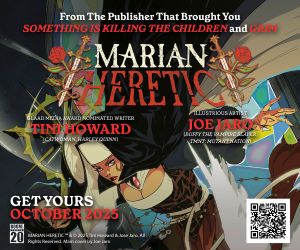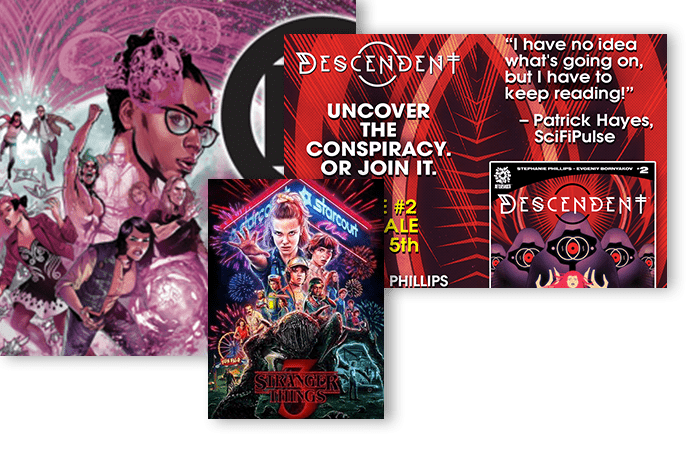In what’s been one hell of a ride thus far, ABSOLUTE WONDER WOMAN is one of the best DC comics on the shelf, if not the best out there. Written by Kelly Thompson with amazing artwork by Hayden Sherman, Absolute Wonder Woman is a pure reimagining of Diana if she were a black magic wielder who was raised in Hell.
Few modern comic writers can balance kindness, action, and razor-sharp character work as effectively as Kelly Thompson—let alone infuse it with such emotional depth and heroic sacrifice. In this interview, she discusses her approach to writing Wonder Woman, the challenges of working with such a rich history, plus discusses the book’s themes and what fans can expect from the series.
So whether you’re a longtime Wonder Woman fan or new to her mythology, Thompson’s insights offer a fascinating look at the creative process behind one of comics’ most enduring icons.
This interview was edited for clarity
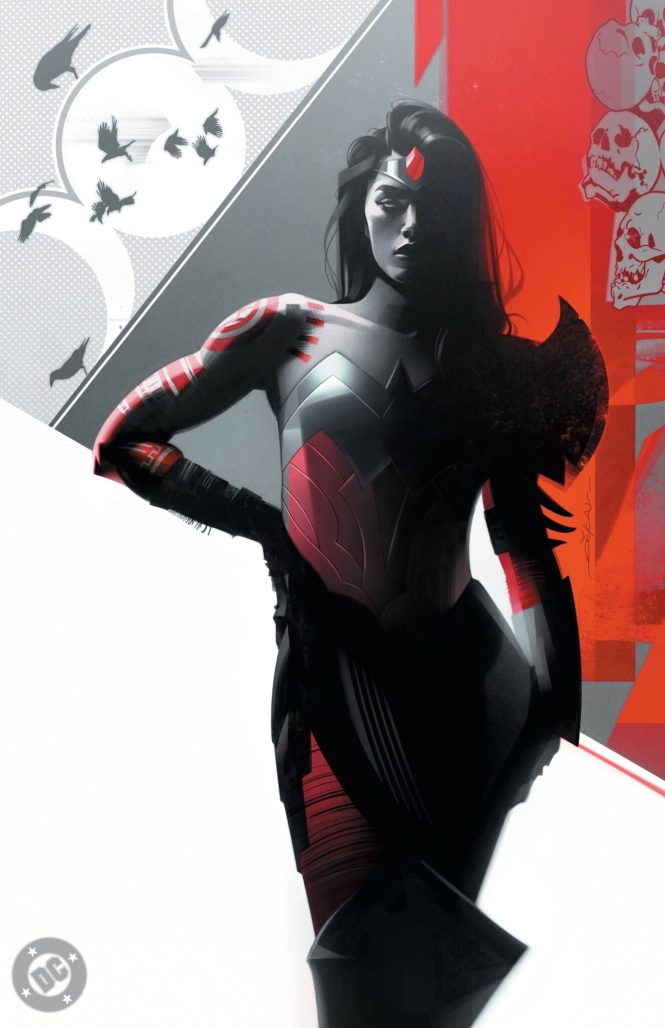
CHRISTIAN ANGELES: Absolute Wonder Woman feels almost goddess-like, a beacon of hope who fights only when necessary, drawing strength from her love of others. That collectivist theme makes this my favorite DC story right now but I’d like to know, in your own words, what is your emotional throughline for your run with Diana?
KELLY THOMPSON: I think the throughline for our Diana is that she has been radicalized by deep injustice—the injustice of what was done to her—left for dead in the Underworld as a baby, her family and heritage stolen from her—even the name of what she is, taken from her. And everywhere she looks—she sees similar injustice. She believes—rightly or wrongly—that she has been empowered by the Goddesses to bring these injustices to light, to stop them, to save the world. And she won’t stop until she’s done that or she’s dead. And that, dark though it is, is the kind of ember that inspires others to rise up… that stars the flame of revolution.
ANGELES: Reframing Diana as a princess of Hell has led to some seriously metal storytelling—her nemesis whip is a judgment weapon based on sins. Every spell demands sacrifice making it both a power, but also, a burden that comes at costs. What went into crafting the lore and keeping its tone consistent?
THOMPSON: Well, magic having a price is certainly not something I came up with, it’s a pretty core idea of how magic works in fiction, but I feel like it’s also an idea that often gets lip service without us seeing and feeling it first-hand in the narrative. But as it is a huge part of Diana’s world and power – it was critical we feel the reality of that. If we were going to see the power she had a result of magic, we also had to see and feel the sacrifice.
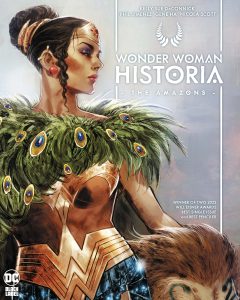
ANGELES: I love the line in Issue #3: “Kindness and compassion are all that will save us now.” Your take on Wonder Woman is so distinct—raised in Hell, hardened by fire and battle, she’s lost everything yet forged hope in a place meant to be where all hope is lost. I want to know – what’s the allegory here. Because these lines are so very powerful for these times, and I think it’s good for audiences to get what it is you’re conveying.
THOMPSON: Diana is—and always should be—a beacon of hope. I think taking that out of her probably makes her not Diana anymore. But when thinking about Diana’s obviously very honorable mission of peace, it didn’t make a lot of sense to me in this world. While peace is beautiful, I’m not really sure it exists in a world rife with injustice and Diana’s world is even darker than ours in that regard. Her line about kindness and compassion—I suppose there’s plenty of subtext that can be found in the line—but is the more radical interpretation just taking it at face value? Kindness and compassion ARE what will save us now…if you care at all about a world where such things still exist. A writer friend said to me some months ago “What can I say? You get the world you made.” And… well, I cannot stop thinking about that.
ANGELES: I think the moment I fell in love with this comic was the Greek vase—its resemblance and composition with the panels. Hayden Sherman is blowing it away on these pages with the wide landscapes contrasting beautifully with intense action sequences. I gotta know what is it like collaborating with them in making these pages?
THOMPSON: Hayden is just a truly exceptional collaborator. I think it helps that we are very on the same page about the story we want to tell, the themes that interest us, the importance of both Diana and her narrative. But it’s been an uncommonly fantastic collaboration—even for me—someone who has, quite frankly, been incredibly lucky when it comes to collaboration. The vase scene is great example of us just being very in sync. In the script I suggested the “Greek Styling” for figures and a “Greek Vase” as “panels/borders”—and I might have suggested that to any artist—since we’re trying to dial into Diana’s heritage and to also play with the visuals in exciting ways. But in Hayden’s case I was certain they would be very interested in executing such a thing—as well as the perfect artist to undertake it. And I was right—they loved the idea –and what they came up with was better than I could have imagined. It’s simply a delight working with them, a delight that pushes me and thus the book to even greater heights.
ANGELES: Talk to us about Steve Trevor? The would be romance, but only, if necessary. I know Steve’s view of Diana represents the audience’s point of view in ways, but I’d like to know, how does Diana see Steve? What is he to her?
THOMPSON: I think it’s simply too soon to say if Diana is interested in Steve romantically or not. She has a lot on her plate and almost everything is new to her, so she’s not interested in boxing herself into one path when she has literally just escaped her Underworld prison. That said, there’s clearly a deep connection between them and something that brings them together over and over again in their stories and we’re excited to explore that. I would say that I think it’s a shallow reading of the text to believe she cut off her right arm simply out of romantic love. It’s not wrong to think or consider romantic love as a factor in her decision, but reading it as such feels like ignoring a lot of the other things we’re saying—in both literal text and subtext.
ANGELES: There’s a strong statement here about Diana existing outside the military industrial complex. I feel like that important distinction foreshadows the next arc ahead but can you tell us anything more about that distinction? How about Veronica Cale and the President?!
THOMPSON: Well, part of that scene is there to re-enforce the difference between a Diana raised in paradise by Hippolyta and The Amazons, and a Diana raised in the Underworld by a brilliant sorceress who has… complicated relationships with men. Men who mostly end up pigs when they come into contact with her.
[laughs]
But it’s also a mark of a young woman who knows a lot is against her, trying to draw a line in the sand with powerful people, to assert herself and make her boundaries known. But I suspect someone like Veronica Cale would see it as bluster—a Princess all alone, trying to be tougher than she is. Who’s right? Time will tell. Diana is certainly the underdog, that’s for sure.
ANGELES: The Tetracide is devastating—erasing mind, body, and spirit. There’s an existential horror to this kind of destruction and I want to know what C’thulu-like machinations were this more indicative of, yourself or Hayden’s creative ideas?
THOMPSON: I had some very specific ideas about how I wanted to deploy Diana’s narrative—slow rolling out her backstory and characters and weapons over the first arc. And that demanded a certain kind of villain that would get us a lot of exciting action moments without weighing us down in a lot of villain backstory. It was also the chance to create a monster that felt like it could be a real thing from mythology – like C’thulu or Godzilla or Hydra—but with our own “this world is weird and different and extra dark” twist. Which is how you end up with a Kaiju that also destroys your soul if it consumes you. Dark. It was also important we establish the kind of threats Diana would be facing—and the kind of world she comes from—and old and dangerous one—even if she herself is quite young, she has been raised with this knowledge—of a world most humans only know through legends, myths… stories.
Hayden obviously really excels with this kind of design, but that seems almost silly to say at this point, because, quite frankly, they excel at everything.
ANGELES: The Athena Blade has drawn comparisons to Final Fantasy VII’s Buster Sword, but in recent issues, gets, pret-ty huge. Does the sword get bigger than this? And tell us about its use and creation in the story – as I’m told this was originally an Axe.
THOMPSON: I think… in theory, given what we saw in issue #4, the Athena Blade can get as large as Diana’s magics can allow. But since you guys have seen that trick she’s not likely to pull it again anytime soon. We have lots more toys to get to anyway—as you’ll see in issue 5! You’re right that I did originally want the sword to be an axe—and some of that was just personal predilections—but there was some concern that historically people have reacted poorly to Diana with a sword—not that they necessarily would love an axe.
[laughs]
But it was a bit moot as we found out early on that Batman was going to have an axe and it was very baked in to the concept – so we pivoted. And as soon as I saw Hayden’s design for the Athena Blade I felt sure people would love it as I did.
ANGELES: Please, hints at what’s to come in the finale? How about what’s to come in the the second arc of the story?
THOMPSON: Gosh, I love the finale of arc 1 so much. I had two ideas for how to solve The Tetracide threat in a permanent way and I pitched both to Hayden. And after I sent the email I started regretting it, because I was getting so attached to one idea over the other. But Hayden, always brilliant, emailed back loving the same idea I did—and now, looking back, I can’t believe we ever considered NOT doing it this way, y’know? It just brought things full circle in such a powerful way for this first Wonder Woman story—and I’m so in love with it. Hayden and Jordie’s approach to it is spectacular.
So the second arc (issues #6 & #7) is an alternate artist arc with my incredibly talented friend Mattia De Iulis (The Cull, Jessica Jones)—where we see Diana back in the Underworld and dealing with the ramifications of having escaped. We get both flashbacks and present-day stories set in the Underworld and I think—especially for people interested in her backstory, the Underworld, and the Gods—it will be a lot of fun.
And then with issue #8, we’re back in Gateway City and Hayden and Jordie are back too. Expect to see more of Veronica Cale of course and some other villains (and allies) you’ll recognize, as well as some fun new surprises and of course… more weapons. There’s a lot of time to make weapons when you’re trapped in the Underworld!
ANGELES: Finally, the most important question: Who’s the best boy—Skeleton Pegasus or Jeff the Landshark?
THOMPSON: Oof. I refuse to answer that question on the grounds that… I DO have a favorite and I will never tell.
Thanks again to Kelly Thompson! Absolute Wonder Woman #5 will be in stores on Feb. 26th
